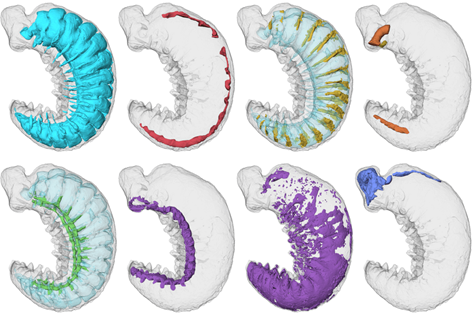By: Kevin Wang
Researchers recently unearthed a small worm fossil in China that would’ve lived half a billion years ago. It’s extremely rare for an organism as small and fragile as this worm to be preserved in such good conditions. According to BBC Newsground, “one scientist said their ‘jaw just dropped’ when it was uncovered.” This tiny fossil is important because it may just be the key to explaining how insects have evolved.
This small worm called Youti Yuanshi was alive 520 million years ago. This larva is an early version of modern arthropods, a group of animals consisting of insects, spiders, crabs, and centipedes. Upon further inspection by scientists, the larva had almost all its internal organs intact. Dr. Martin Smith at Durham University, who published a paper on the larva, described the odds of finding a fossil like the worm as “practically zero.” BBC reported that the intact condition of the brain and nervous system has allowed scientists like Dr. Smith to figure out how insects like butterflies were able to develop such complicated brains and organs. Before this discovery, scientists only had adult fossils to study, so the organs’ complexity seemed to come out of nowhere, but now this new fossil allows them to understand better what’s happening.
Dr. Smith and his team created detailed 3d images of the worm using special equipment at the Diamond Light Source Facility. The facility allows scientists to create extremely intense beams of light to help with research. These beams of light were how the scientists could see the internal organs of the worm. Dr. Smith said, “The exciting thing about this fossil is that you can see all sorts of internal details.” The segments of this worm and its complex internals are what allowed arthropods today to be so widespread.











